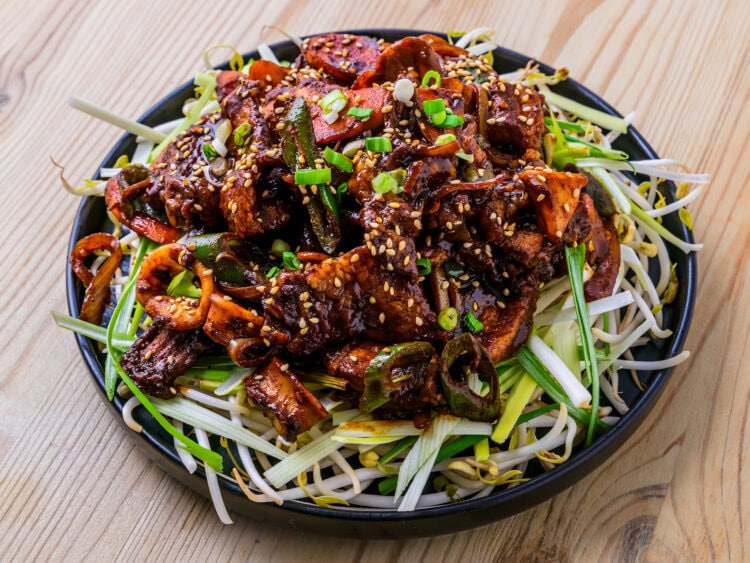A delicious traditional Korean bulgogi recipe with pork and squid
The wok brushes against the flame and the room is immediately filled with the scent of the East Sea: already salted squid rings shrink next to ribbons of pork belly, all lacquered with a scarlet glaze that crackles and snaps like pine logs. A cloud of gochu-scented steam rises, lightly stinging the eyes and whetting the appetite.
This is Osam Bulgogi, the dish that condenses the dual coastal and alpine identity of Gangwon-do into a single addictive bite. The elastic squid pops with saltiness, the pork belly follows with a creamy fat, and the sauce oscillates between sweetness and heat.
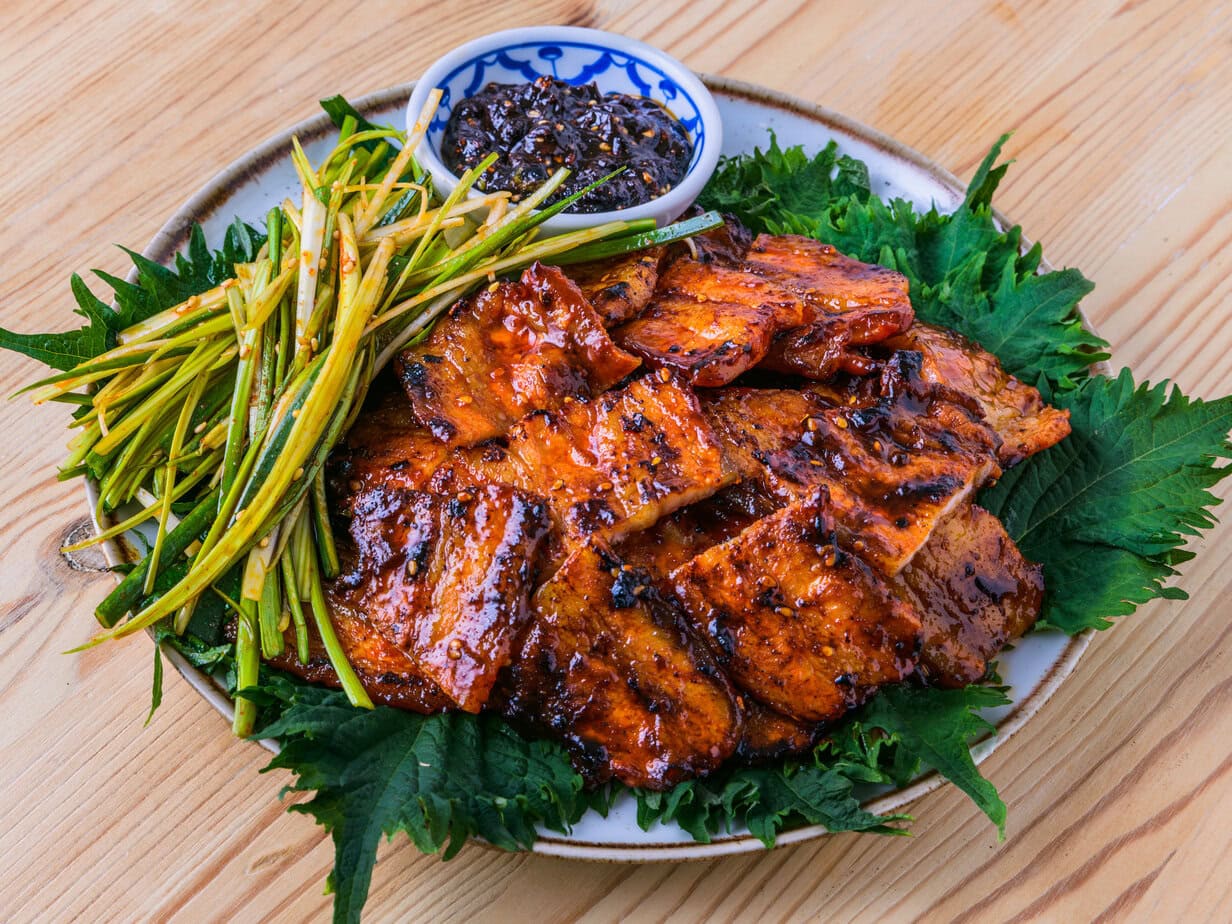
In this article, you’ll trace its history born at a market stall, discover the truly essential ingredients, learn the high-heat dance that keeps the squid tender and the pork golden, then find ideas for serving or reinventing it at home. More broadly, it’s an essential of Korean cuisine too often overlooked in our regions.
Roots of Gangwon: when Market Ingenuity Forged a Classic
Walk through the fish market of Gangneung in the late 1960s: you would sense the birth of Osam Bulgogi. At dawn, trawlers unloaded their shimmering catch, while farmers from the hinterland arrived with trays of pork belly, cheaper than luxury beef but just as delicious.
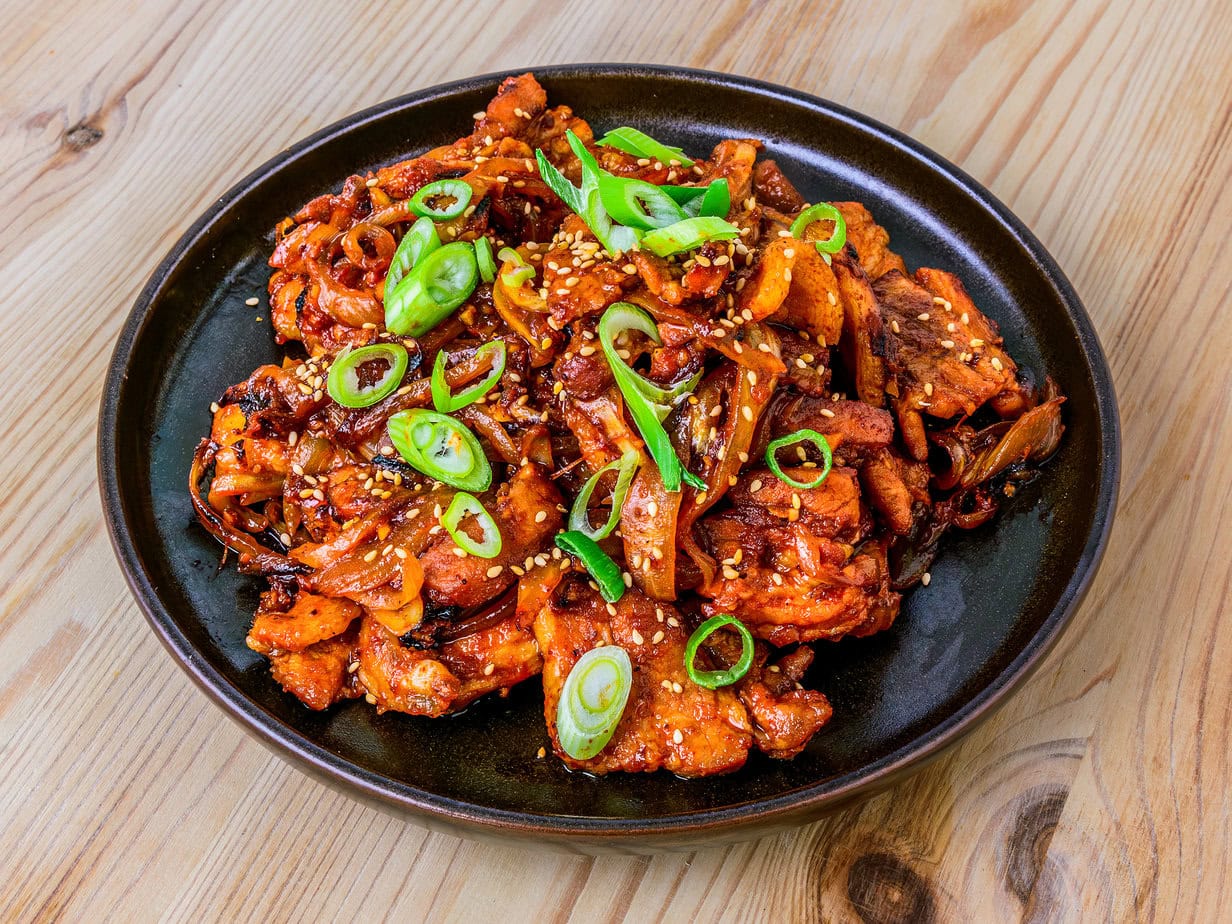
The vendors, mindful of post-war frugality, combined the two proteins in the same fiery stir-fry and offered a hearty plate at a fraction of the price of beef bulgogi. In the frigid highlands of Daegwallyeong, where winter winds whipped cheeks, this reddish pan also served as central heating.
The name spells itself out: O for ojingeo (squid), Sam for samgyeopsal (pork belly) and bulgogi, literally “fire meat”. In short, it’s a bulgogi of pork and squid.
The locals quickly adopted it as the ideal anju, a drinking accompaniment capable of standing up to strong soju. Today, travelers queue along Hwenggye Osam Bulgogi Street, where aluminum foil-covered plates still crackle under mountains of reddish seafood and pork.
The Main Ingredients of Osam Bulgogi
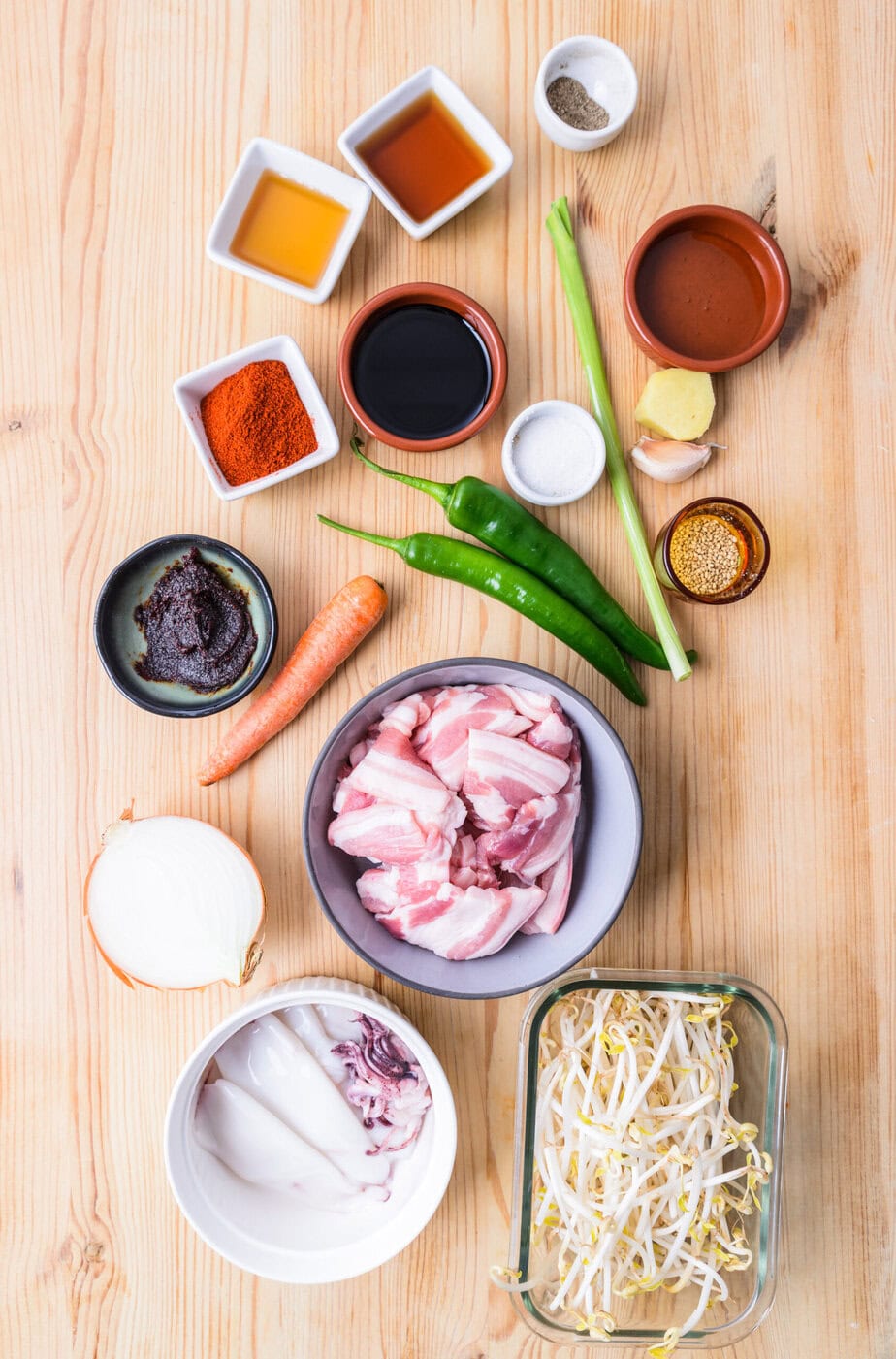
Authenticity begins with texture. Fresh squid is cleaned until translucent; the mantle is cross-hatched regularly then cut into thin strips of 1 × 5 cm.
These cuts allow the sauce to penetrate deeply and make the squid accordion into a supple chew when heated. The Gangwon pork belly, sliced just over half a centimeter thick, renders just enough fat to soften the squid’s brine without becoming heavy grease. The vegetables remain modest: threads of onion, diagonally cut chives, two or three green chilies, supporting actors who know how to stay in the background.
The sauce is non-negotiable: gochujang made with sun-dried taeyangcho chili for body, gochugaru for punch, soy sauce for saltiness, sugar for shine, minced garlic for bite, a drizzle of sesame oil for aroma and a dash of rice wine to soften any fishy notes. Purists stop there.
Today’s cooks sometimes add oyster sauce, nuoc-mâm or a spoonful of plum extract for layered sweetness, but the goal remains the same: maekomhago dalkomhanssat, that lacquered balance of spicy sweetness that adheres to every groove of the squid and pork.
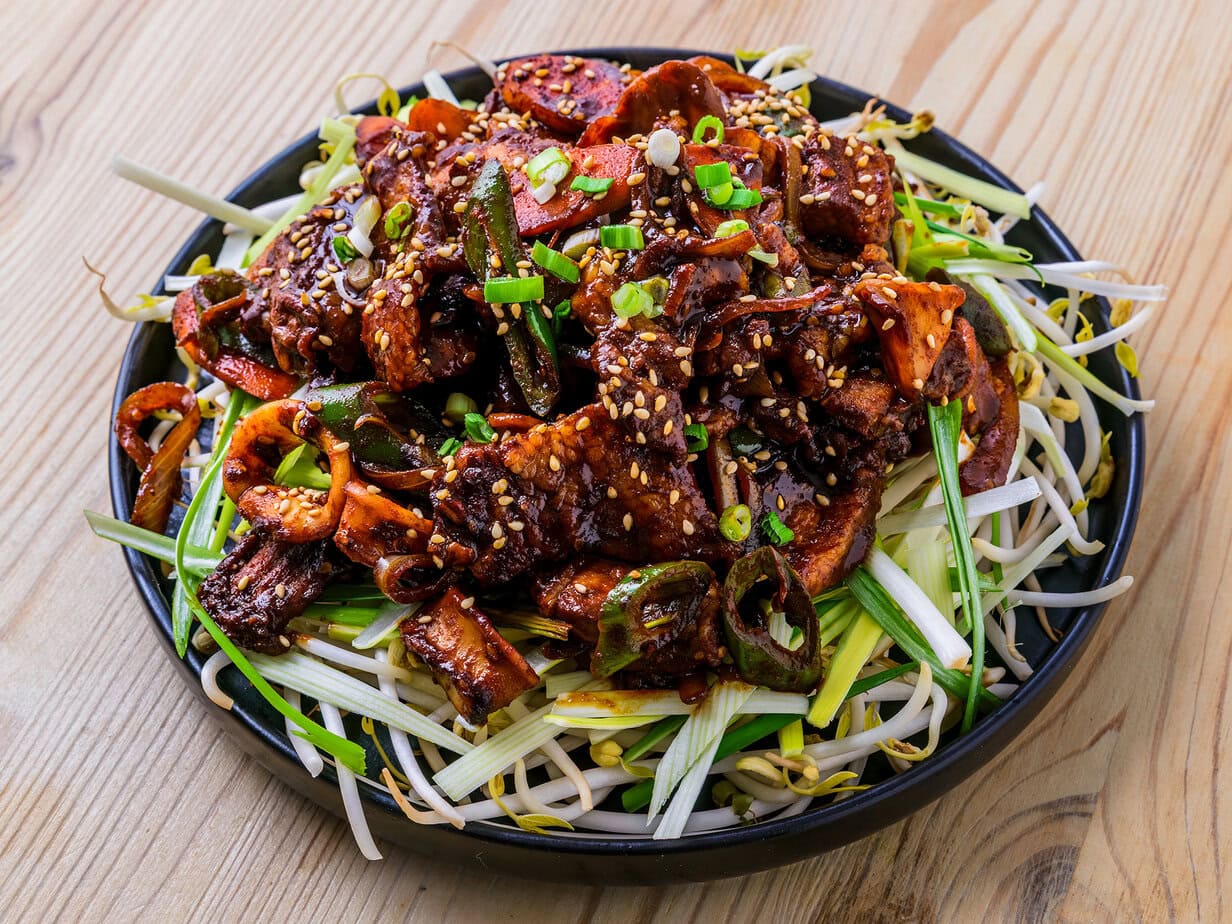
Osam Bulgogi – Pork and Squid Bulgogi
Equipment
Ingredients
Main Ingredients
- 250 g pork belly
- 1 squid
- 0.5 onion
- 0.25 carrot
- 2 hot green chilies
- 1 red chili pepper
- 1 stalk scallions
For the Sauce
- 2 tablespoons of gochujang
- 2 tablespoons by gochugaru
- 2 tablespoons dark soy sauce
- 1.5 tablespoons of sugar
- 1 tablespoon garlic chopped
- 1 tablespoon shaoxing wine
- 1 tablespoon sesame oil toasted
- 0.5 tablespoon corn syrup or honey
- 1 teaspoon of sesame seeds
- 0.5 teaspoon of ginger chopped
- 1 pinch pepper
Instructions
- Clean the squid thoroughly under running water after removing the entrails.1 squid
- Finely chop the onion and spring onions, cut the chilies diagonally, and slice the carrot into long flat strips.0.5 onion, 0.25 carrot, 2 hot green chilies, 1 red chili pepper, 1 stalk scallions
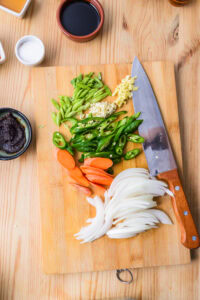
- Prepare the sauce by mixing all ingredients well in a bowl, then let it rest for 30 minutes.2 tablespoons of gochujang, 2 tablespoons by gochugaru, 2 tablespoons dark soy sauce, 1.5 tablespoons of sugar, 1 tablespoon garlic, 1 tablespoon shaoxing wine, 1 tablespoon sesame oil, 0.5 tablespoon corn syrup, 1 teaspoon of sesame seeds, 0.5 teaspoon of ginger, 1 pinch pepper

- Cut the pork belly and squid into bite-sized pieces.250 g pork belly
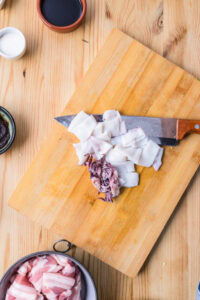
- Mix them in a bowl with the onion, spring onions, carrot, and chilies.
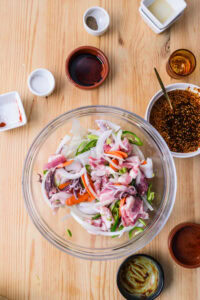
- Add the sauce and coat all ingredients well, then marinate for 30 minutes.
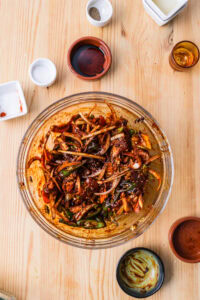
- Stir-fry everything in a wok or large pan until the moisture evaporates.

Notes
Nutrition
Culinary sources
- Gangwon-do Local Encyclopedia (“디지털 강릉문화대전”): definition, origin and ingredients of Osam Bulgogi
- Doosan Korean Encyclopedia (두산백과): lexicographical entry on the dish
- Gangneung Cultural Archives: highlighting the traditional taste with “sun-dried” chili paste (태양초)
- VisitKorea – “Hwenggye Osam Bulgogi Street”: History and Charcoal Preparation Method
- The Women Dong-A Magazine (Jan. 17, 2011): Authentic Recipe, Tips & Proportions
- Korean Wikipedia – “오삼불고기” & Namuwiki: Techniques (Separate Marinade, High Heat Cooking)
- Kimchimari – Osam Bulgogi Recipe: Modern Version, Serving Ideas
- Chef Baek – 10,000 Recipe Sheet: Contemporary Variations, Family Portions
- Chef Kim’s Recipe Blog – “40 Years of Tradition”: Original Oyster Sauce Marinade
- Seonkyoung Longest – Recipe & Video: Step-by-Step in English
- Reddit r/KoreanFood: User Feedback (2023-2024 Threads) on Authenticity and Cooking Tips
- Facebook – “Korean Osam Bulgogi”: Photos and Community Discussions
- ManGaes Recipe – “오삼 떡 불고기”: Version with Tteok (Rice Cakes)
- Naver Blog – “아이들이 좋아하는 오삼불고기”: Quick Method Without Excess Moisture
- LampCook – Sheet “Spicy Squid & Pork Stir-Fry”: Culinary Glossary
